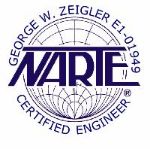Bonding and Grounding Solutions for Your Facility
The Importance of Bonding and Grounding
The importance of properly bonding and grounding any facility/home can not be overstated. When bonding and grounding is implemented correctly it can help the facility during its normal operations and during some type of power disturbance such as a lightning strike, power surge and even voltage fluctuations.
Bonding is the term used to connect all metallic components to the grounding electrode system (GES). The actual grounding/earthing of the bonding conductor takes place at the grounding electrode which is in contact with the earth. Non-current-carrying metallic components in a facility/home, such as equipment cabinets, enclosures, and structural steel, need to be electrically interconnected so voltage potential cannot exist between them. When you have no voltage potential difference you cannot get shocked. The benefits for the facility/home owner are many : maximized equipment protection, elimination of shock hazard potential, increased process uptime, and reduced costs through avoiding expensive machine servicing.
It is also important to that some people use terms like “bonding,” “grounding,” and “earthing” interchangeably which can be very confusing in certain situations. Grounding/earthing is the attachment of a bonded metallic system to earth, typically through ground rods or other suitable grounding electrodes. The National Electrical Code (NEC) prohibits earthing via isolated ground rods as the only means of equipment grounding. Nevertheless, some manufacturers of sensitive machinery actually encourage this practice in their installation manuals, in order to reduce “no problem found” service calls associated with machine errors and rebooting.
The best means of equipment grounding is to route a grounding conductor, suitably sized, along the same route as the power and neutral conductors, from source to equipment. The NEC does allow use of metallic conduit and other substitutes, but some industry experts believe these systems are less effective and should be avoided.





